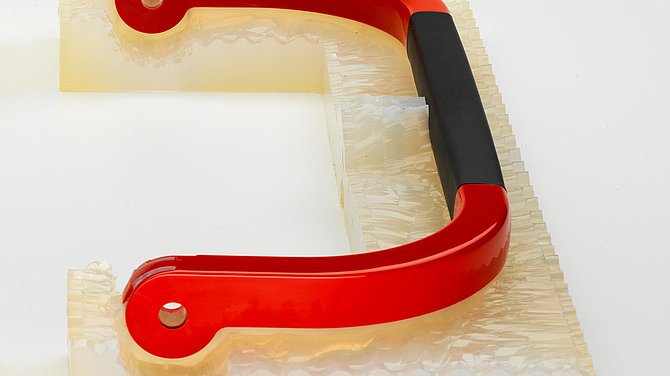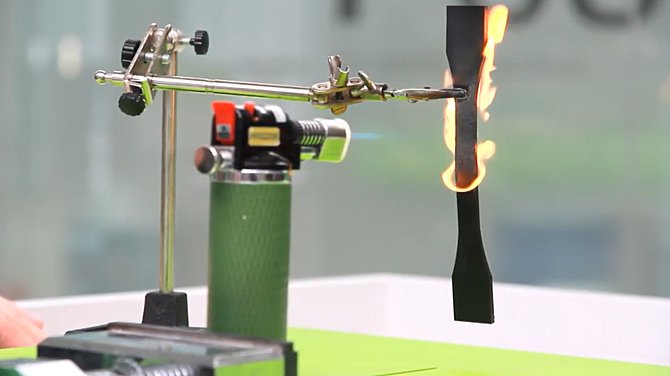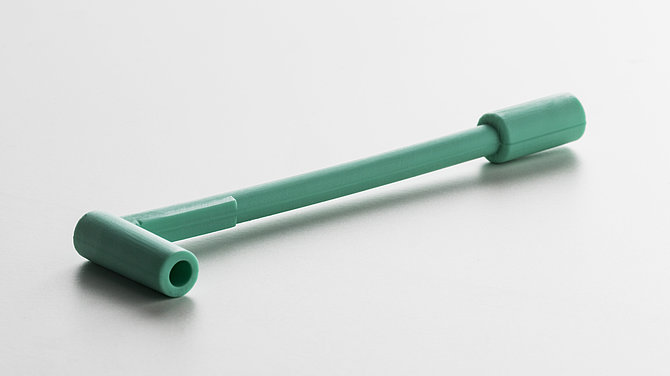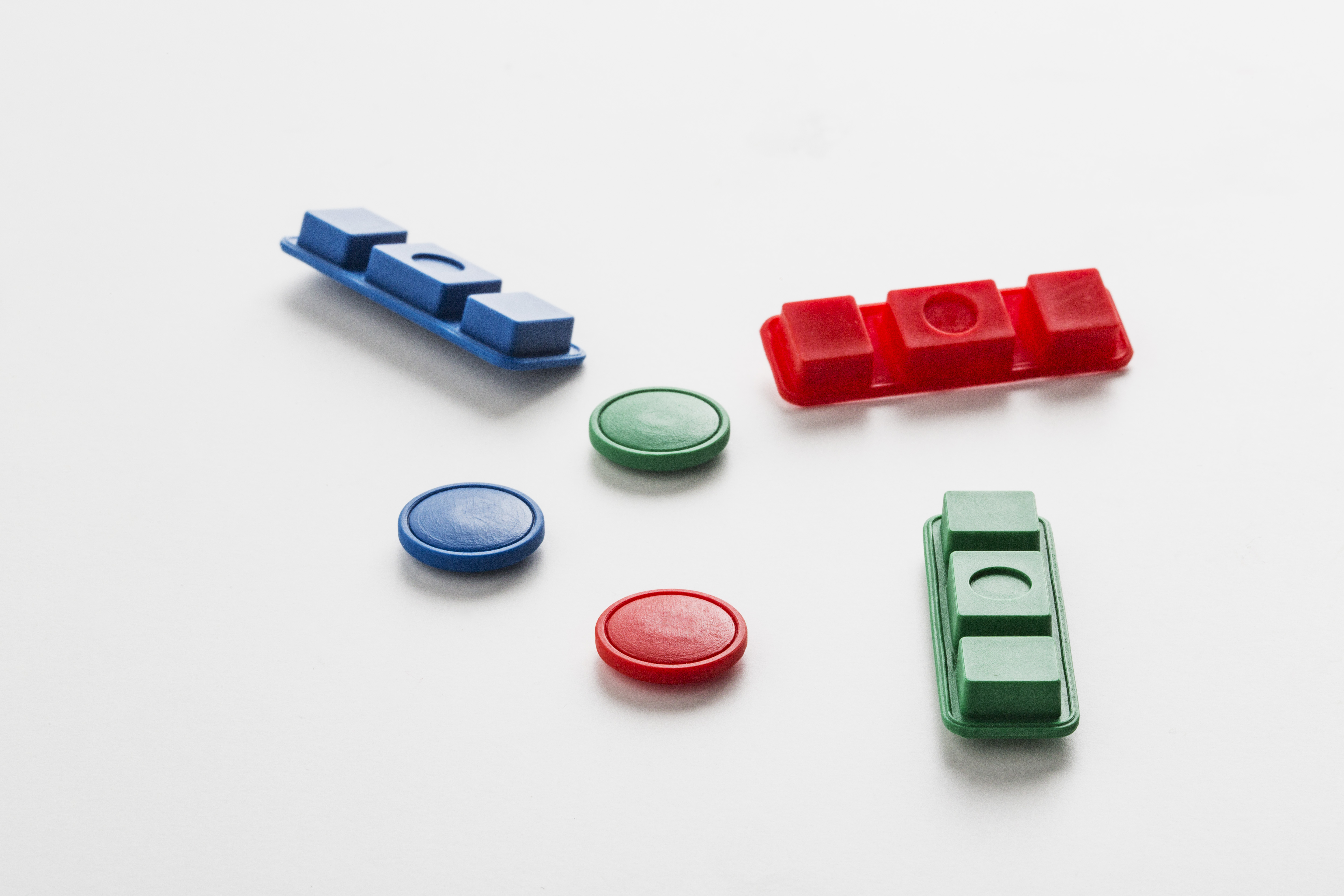
Vacuum-cast polyurethane rubber (PUR rubber) Elastomer components from 30 to 90 Shore A
Vacuum casting is ideal for duplicating models and components in elastomer construction. Starting from a master model, a silicone mold is created, which is then used to duplicate parts made of polyurethane rubber. Alternatively, parts made of polyurethane rubber can also be produced with the use of hard tools. First components can be achieved in a few days.
Materials
The material base is a transparent material. Its advantage: its colorability or, at the customer's request, the production of a transparent elastomer component. The material is available in degrees of hardness from 30 to 90 Shore-A (in 5 Shore increments). Prototypes are just as feasible as small series.
| Test method | Rubber | |
|---|---|---|
| Shore A hardness | ISO 868-85 | selectable 30,35,40,45,50,55,60,65,70,75,80,85,90 |
| Elongation at break [%] | ISO 37-77 | 200-300 |
| Thermal stability [°C] | T.M.A. Mettler | 120 |
| Thermal stability [°C] | HDT | |
| Shrinkage [%] | 5mm thickness | 0.1 |
| Base color | transparent | |
| colorable | selectable | |
| Final curing at 23°C | 5 days |
Shore 40 A
| Mass change % after | 7 days | 14 days | 30 days | 150 days |
|---|---|---|---|---|
| Diesel | 28.8 | 28.9 | 30.1 | 29.5 |
| Engine oil | -3.9 | -4.4 | -3.5 | -3.2 |
| Brake fluid | 205.1 | 294.1 | Destroyed | Destroyed |
| Acetone | 457.6 | 500.1 | Destroyed | Destroyed |
| Tap water | 2.0 | 2.1 | 2.1 | 2.6 |
| Sea water | 1.8 | 1.8 | 1.7 | 1.7 |
| 10% sulfuric acid | 1.6 | 1.6 | 1.7 | 2.1 |
| 10% hydrochloric acid | 1.7 | 1.7 | 1.7 | 1.7 |
| 10% sodium hydroxide solution | 1.6 | 1.5 | 1.5 | 1.5 |
| Coolant | 2.6 | 2.8 | 3.1 | 3.2 |
Shore 80 A
| Mass change % after | 7 days | 14 days | 30 days | 150 days |
|---|---|---|---|---|
| Diesel | 19.4 | 21.1 | 21.0 | 21.0 |
| Engine oil | -0.2 | -0.2 | -0.3 | -0.5 |
| Brake fluid | Destroyed | Destroyed | Destroyed | Destroyed |
| Acetone | Destroyed | Destroyed | Destroyed | Destroyed |
| Tap water | 2.0 | 2.0 | 2.0 | 2.0 |
| Sea water | 1.9 | 1.9 | 1.8 | 1.8 |
| 10% sulfuric acid | 1.5 | 1.5 | 1.5 | 1.6 |
| 10% hydrochloric acid | 1.8 | 1.7 | 1.7 | 1.8 |
| 10% sodium hydroxide solution | 1.5 | 1.5 | 1.5 | 1.6 |
| Coolant | 2.5 | 2.8 | 3.0 | 3.2 |
Shore 100 A
| Mass change % after | 7 days | 14 days | 30 days | 150 days |
|---|---|---|---|---|
| Diesel | 36.1 | 37.7 | 39.5 | 39.9 |
| Engine oil | -1.5 | -2.2 | -2.8 | -3.4 |
| Brake fluid | 170.0 | 245.1 | Destroyed | Destroyed |
| Acetone | Destroyed | Destroyed | Destroyed | Destroyed |
| Tap water | 1.8 | 1.8 | 1.8 | 2.6 |
| Sea water | 1.7 | 1.6 | 1.6 | 1.7 |
| 10% sulfuric acid | 1.4 | 1.4 | 1.5 | 2.1 |
| 10% hydrochloric acid | 1.5 | 1.5 | 1.4 | 1.6 |
| 10% sodium hydroxide solution | 1.3 | 1.2 | 1.2 | 1.2 |
| Coolant | 2.1 | 2.4 | 2.6 | 3.0 |
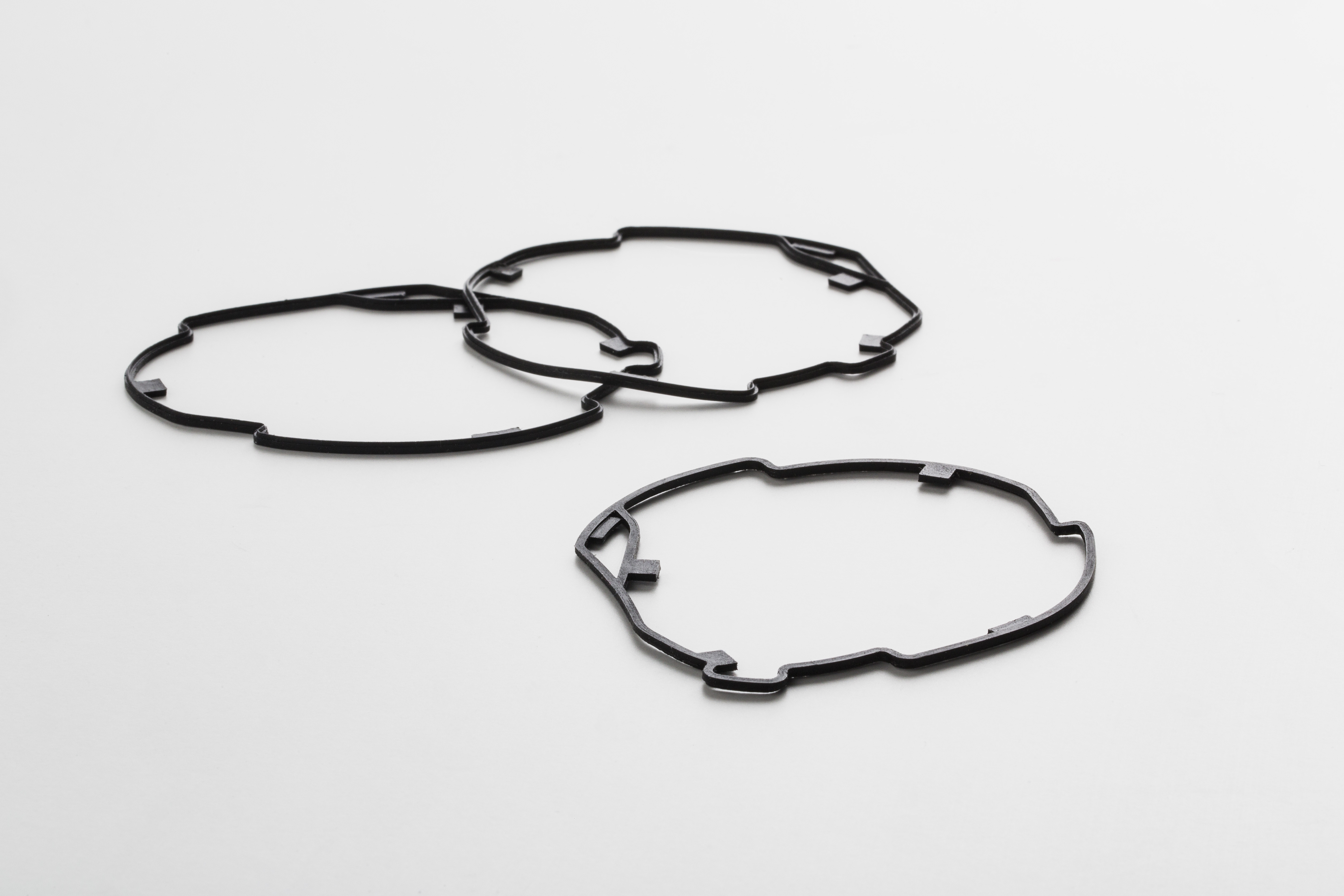


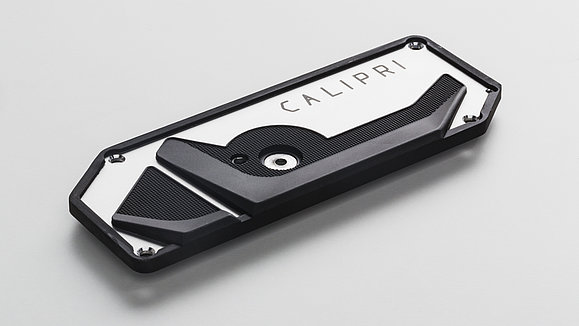
Advice tailored to your needs
At 1zu1, we help you find the perfect solution by combining the best technology with a wide range of materials. And this is implemented in the shortest possible time and with the highest technical precision.
Challenge us. What can I do for your project?

Stefan Rädler
1zu1sales
area manager Germany
T +43 5572 33 333-842
stefan.raedler@1zu1.eu
» For perfectly implemented ideas, I propose new technological paths with my customers.«
In motocross and enduro, Stefan Rädler is on difficult paths.

Stefan Rädler
1zu1sales
area manager Germany
T +43 5572 33 333-842
stefan.raedler@1zu1.eu
» For perfectly implemented ideas, I propose new technological paths with my customers.«
In motocross and enduro, Stefan Rädler is on difficult paths.
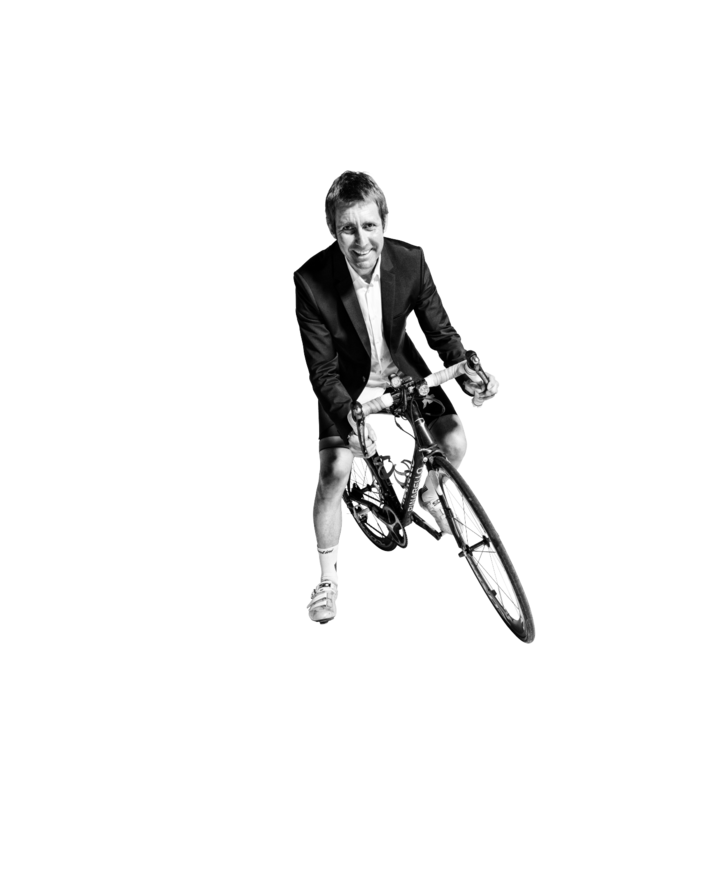
Klaus Pichler
1zu1sales
area manager Austria
T +43 5572 33 333-838
klaus.pichler@1zu1.eu
»As a cyclist, I know that excellent technology is the key to speed – and therefore to success..«
Klaus Pichler spends his free time in the saddle – he and his road bike conquer Austria’s mountains with endurance and the right pedal stroke.
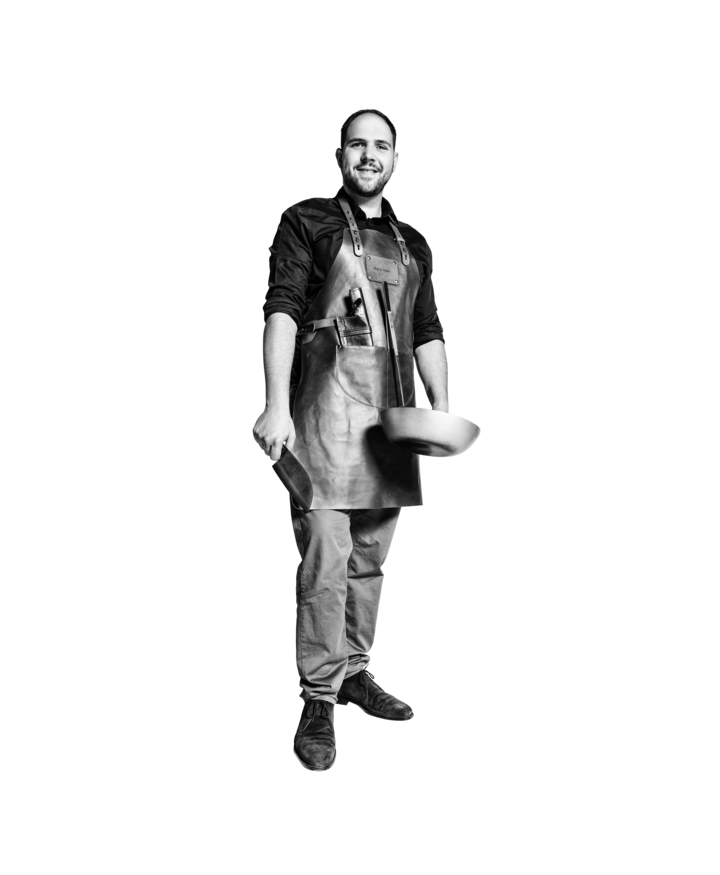
Sebastian Mathies
1zu1sales
business developer
T +43 5572 33 333-834
sebastian.mathies@1zu1.eu
»1zu1prototyping, that's like fast food on the level of top gastronomy. And if necessary, with a lot of portions.«
Sebastian Mathies knows that the eye also eats. That's why he chooses the right ingredients, the right technology and the necessary finishing steps. The result: prototypes to your taste.
The vacuum process enables fast, efficient and cost-effective production of desired structural and molded parts. In addition, two different materials (hard and soft) can be combined during production. Inserts (magnets, threads, inserts, etc.) can also be integrated into the component.
The production process takes place in a vacuum or under negative pressure. What is the effect of this vacuum? On the one hand, it ensures bubble-free processing of the material. On the other hand, flow resistance within the mold caused by air pockets is avoided. This means that at 1zu1, we can achieve homogeneous, pore-free material properties.
- From master model to casting mold:
- Casting in vacuum
- For simple components directly via a casting mold in 3D printing or milling technology: For series application 1zu1 recommends 100 to 200 pieces.
- 3D printing of silicones:
- Discharging the material via nozzles or injecting a catalyst into a silicone bath
- Cantilevered components are possible
- Layered structure visible
- Vacuum casting materials: use of original silicone, including food-grade silicone
Polyurethane is the collective chemical term for elastic to hard plastics produced from polyalcohols and polyisocyanates. The curing reaction is a polyaddition. Polyurethanes have many uses, e.g. for the production of household sponges, adhesives, paints and floor coatings. Synthetic textile fibers such as polyurethane are also used in the fashion sector.
SHORE hardness, named after Albert Ferdinand Shore, is an indicator used primarily for elastomers and rubber-elastic polymers. It is directly related to the penetration depth and is thus a measure of the material hardness.
Elastomer materials (PU rubber) are available in various degrees of hardness from 30-90 Shore A. Thermoplastic-like materials are available in degrees of hardness from 45-85 Shore D.
| Shore A | 30 | 40 | 50 | 60 | 70 | 80 | 90 | 95 | ||||
| Shore D | 45 | 55 | 60 | 65 | 70 | 80 |
